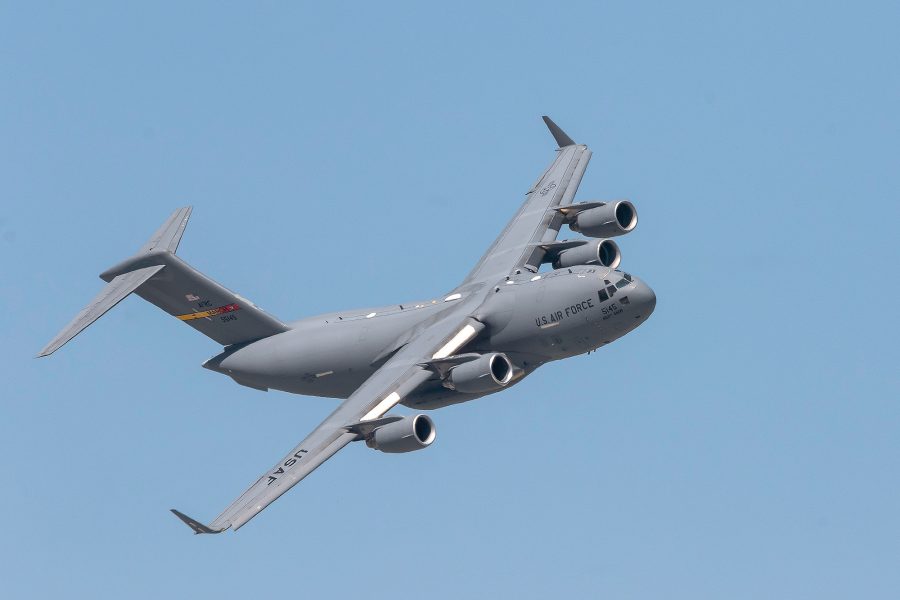Air Force Secretary Frank Kendall revealed Oct. 10 that C-17 Globemaster III aircraft have carried out several missions to and from Israel since the militant group Hamas launched surprise attacks over the weekend, sparking an all-out war.
“We’ve had a couple of missions I’m aware of where C-17s have brought some people back from Israel that were there. Beyond that I really can’t get into that area,” Kendall said in an interview with the Atlantic Council, confirming reports from open source flight trackers that noted C-17s flying in and out of Tel Aviv on Oct. 8.
U.S. Central Command did not immediately respond to queries from Air & Space Forces Magazine requesting more details about the missions. Kendall declined to reveal more specifics in the interview.
In addition to the C-17s, Kendall did note other adjustments in Air Force deployments in the region as a result of the conflict.
“Some of the units that were due to rotate back to the United States are staying in place and their replacements are going to come in as well, so that they’ll increase our force posture in the region,” Kendall said.
Kendall’s comments follow on an Oct. 8 statement from Defense Secretary Lloyd J. Austin III that stated F-35, F-15, F-16, and A-10 fighter aircraft would flow to the region. A Pentagon official told Air & Space Forces Magazine Oct. 10 that U.S. fighter jets are currently on their way to the region, and it will take days for the aircraft to take situated.
As Air & Space Forces Magazine reported on Oct. 6., F-35 stealth fighters from Hill Air Force Base that had deployed to the Middle East left the region last week. The fighters were there to deter Iranian aggression in the Persian Gulf and push back against Russian bullying in the skies over Syria.
U.S. Central Command and the Department of Defense have yet to respond to Air & Space Forces Magazine’s queries regarding whether F-35s jets will deploy to the region in the coming days and if so, where they will come from. F-16s and A-10s are already in the region, but the stealthy F-35 provided more advanced capabilities.
As USAF looks to bolster its force posture in the region, President Joe Biden reaffirmed that the U.S. stands with Israel as he delivered remarks from the White House on Oct. 10. Biden said he reassured Israeli Prime Minister Benjamin Netanyahu that the U.S. response to the events will be swift, decisive, and overwhelming.
“We’re surging additional military assistance, including ammunition, and interceptors to replenish Iron Dome. We are going to make sure that Israel does not run out of these critical assets to defend its cities and its citizens,” he said.
On the same day, National Security Advisor Jake Sullivan also noted the provision of interceptors for the Iron Dome missile defense shield. Sullivan also expressed Washington’s commitment to exploring further ways to enhance Israel’s air defense capabilities at a White House news conference.
“We will be flowing in additional Iron Dome interceptors so that [the Israelis] have the capabilities they need to sustain their Iron Dome defense systems,” he said. “We’re also looking at other ways that we can help augment their air defense capabilities.”
A Pentagon senior official previously stated that there is continuous and close coordination with Israeli counterparts to address their most pressing needs, adding that “planes have already taken off” with equipment.
During his White House address, Biden also confirmed 14 Americans were killed among more than 1,000 civilian deaths in the surprise Hamas attack, and others were taken hostage. Israel’s ambassador to the U.N. Gilad Erdan told CNN that the number of hostages is estimated at between 100 and 150 as of Oct. 9.
